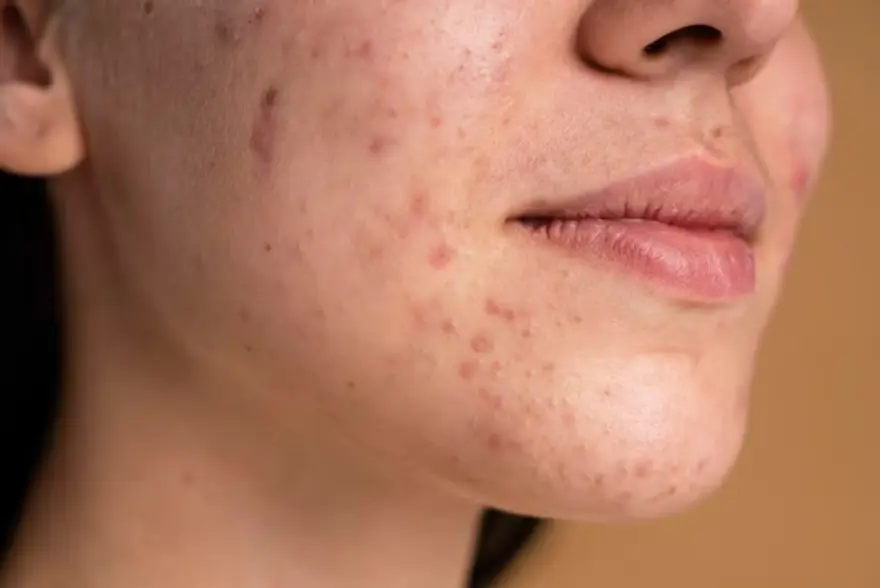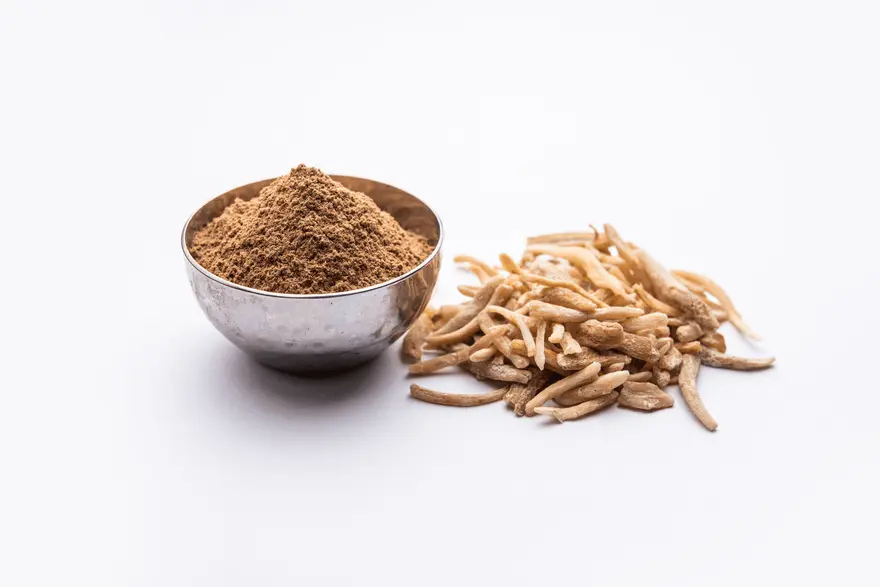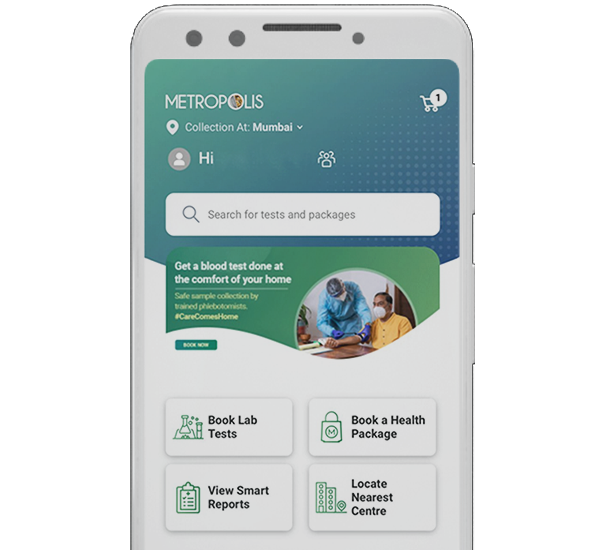Latest Blogs
Managing Benign Prostatic Hyperplasia: Symptoms and Treatment Options
What is benign prostatic hyperplasia (BPH)? Benign prostatic hyperplasia (BPH) is a health issue most commonly seen in older men. In simpler terms, it is an enlargement of the prostate. As the name suggests, benign means its non-cancerous; The prostate gland located under the bladder and plays an important role in semen production. With age, this gland tends to enlarge, leading to BPH. But what does this mean for you? An enlarged prostate can cause bothersome symptoms that interfere with your daily life. It may block the flow of urine from the bladder, leading to bladder complications or urinary tract infections. Understanding BPH is essential as it will help you make informed decisions about your health. Does having benign prostatic hyperplasia (BPH) increase the risk of prostate cancer? It is a common question faced by the healthcare providers. The good news is that benign prostatic hyperplasia does not increase your risk for prostate cancer. Although both diseases affect the same organ and have similar symptoms, they are distinct in nature and have different cell growth patterns. However, regular check-ups are important as age-related changes can increase the likelihood of benign prostatic hyperplasia. Who does benign prostatic hyperplasia (BPH) affect? Benign prostatic hyperplasia (BPH) mainly affects older men. Studies shows that this condition rarely triggers symptoms before age of 40. However, as men age, frequency of benign prostatic hyperplasia symptoms increases. Approximately 50% of men between the ages of 51-60 have benign prostatic hyperplasia, and this number rises to 90% of men over 80. How common is benign prostatic hyperplasia (BPH)? Benign prostatic hyperplasia (BPH) is quite common among older men. It's estimated that there are more than 10 million BPH cases in India per year. What are the symptoms of benign prostatic hyperplasia (BPH)? Benign prostatic hyperplasia (BPH) can cause a variety of urinary symptoms such as: More Urges to Urinate at Night (nocturia) Urgency to Urinate Difficulty in starting a urine stream A weak or interrupted urine stream Dribbling at the end of Urination Urinary Retention Inability to completely empty the bladder Accidental loss of Urine (Incontinence) Painful Urination Discomfort after Ejaculation What happens if you leave an enlarged prostate untreated? If left untreated, an enlarged prostate can lead to complications such as urinary retention, urinary tract infections, bladder stones, and kidney damage over time. What causes benign prostatic hyperplasia (BPH)? The exact benign prostatic hyperplasia causes remain unclear. However, the hormonal changes appear to play a role. Along with the age in men, the level active testosterone level declines and the share of estrogen increases. Higher levels of estrogen can stimulate the growth of prostate cells. Another theory on benign prostatic hyperplasia causes involves dihydrotestosterone (DHT), which plays a vital role in the development and growth of the prostate. Even with declining testosterone levels, older men continue to produce and accumulate high levels of DHT in the prostate, possibly leading to BPH. What type of doctor treats benign prostatic hyperplasia (BPH)? A urologist who specializes in diseases that affect urinary tract is usually the healthcare provider who diagnosed and treats a benign prostatic hyperplasia (BPH). How is benign prostatic hyperplasia (BPH) diagnosed? A healthcare provider diagnoses benign prostatic hyperplasia (BPH) by using different methods such as: Personal and family medical history: Your doctor may ask you about your symptoms, their frequency and severity, your medication regimen, fluid intake, any previous health problems, etc. Physical exam: The doctor examines your body for any abnormalities like enlarged lymph nodes or discharges from the urethra. They may also perform a digital rectal exam to check for an enlarged prostate. Medical tests: These can include blood tests, urine tests, prostate-specific antigen (PSA) test, and imaging tests. Can benign prostatic hyperplasia (BPH) be cured? Although there is no cure for benign prostatic hyperplasia, there are treatment options available to effectively manage symptoms and improve quality of life. These benign prostatic hyperplasia treatment includes lifestyle changes, medications, minimally invasive procedures, and surgery. How is benign prostatic hyperplasia (BPH) treated? Your healthcare provider might opt for different benign prostatic hyperplasia treatment strategies based on your symptoms' severity and how they impact your daily life. There are several ways available for benign prostatic hyperplasia treatment, including: Lifestyle Changes: For those with mild BPH symptoms, making lifestyle changes can provide relief. These could include reducing the intake of liquids before bedtime or going out, avoiding caffeinated beverages and alcohol, monitoring the use of certain medications such as decongestants and antihistamines, and exercising pelvic floor muscles. Medications: Variety of medications can help in the management of the benign prostatic hyperplasia symptoms. These includes alpha-blockers, which relax the muscles of the prostate and bladder to improve the urine flow; 5-alpha-reductase inhibitors, which block the production of DHT and promote the growth of prostate cells; and phosphodiesterase-5 inhibitors, which relieve BPH symptoms by relaxing the smooth muscles of the lower urinary tract. Minimally Invasive Procedures: If the medications proved ineffective, there are several minimally invasive procedures available to help relieve the benign prostatic hyperplasia treatment symptoms. These include transurethral needle ablation and transurethral microwave thermotherapy, both use heat to destroy the tissue of the enlarged prostate. What is the best treatment for benign prostatic hyperplasia? The best benign prostatic hyperplasia treatment will depend on an individual's unique health profile which includes their age, overall health status, the severity of their BPH symptoms, and their personal preferences. However, Transurethral Prostatectomy (TURP) is considered as the “gold standard” of benign prostatic hyperplasia treatment. What can/can’t I eat/drink if I have benign prostatic hyperplasia (BPH)? There isn't a specific diet to follow for those with benign prostatic hyperplasia (BPH), but some general dietary tips might help manage symptoms: Do's – Eat a balanced diet rich in fruits and vegetables. Include more lean protein sources such as fish. Stay well hydrated all day, but limit the liquid intake in the evening to reduce night urination. Don'ts – Avoid caffeinated beverages as they can irritate your bladder and make symptoms worse. Limit alcohol intake as it acts as a diuretic, causing more frequent urination. Reduce spicy foods if you notice they worsen your symptoms. Can an enlarged prostate go back to normal? While medication can help in managing the benign prostatic hyperplasia symptoms and prevent further enlargement, currently, there is no cure available which can return an enlarged prostate to its normal size. How can I reduce my risk of developing benign prostatic hyperplasia (BPH)? While you can't control some risk factors, such as age and family history, certain lifestyle changes can help reduce your risk of developing benign prostatic hyperplasia (BPH). These include: Regular Exercise Healthy Diet Maintaining a Healthy Weight What can I expect if I have benign prostatic hyperplasia (BPH)? Living with benign prostatic hyperplasia means managing its symptoms that can range from uncomfortable to disruptive. You may experience frequent urination, difficulty urinating, a weak urine stream, or the feeling that you are not completely emptying your bladder. In more severe cases, urinary tract infections or kidney problems may occur. However, with the right treatment and management strategies, most men lead full and active lives despite BPH. When to see a doctor? If you have symptoms that suggest benign prostatic hyperplasia, you should consult a doctor immiditely. Also, seek immediate medical attention if you experience a complete inability to urinate, painful and urgent need to urinate with fever and chills, blood in the urine, or great discomfort or pain in the lower abdomen and urinary tract. Conclusion Benign prostatic hyperplasia is a common condition which can greatly impact a man's quality of life. However, understanding its causes, symptoms, and treatment options can make it easier to manage. Remember, regular health check-ups play a crucial role in early detection and effective management of benign prostatic hyperplasia (BPH). Metropolis Healthcare is a leading diagnostic centre that offers at-home sample collection for a wide range of tests. Our dedicated team of qualified technicians ensures accurate results to help you take control of your health.
Understanding Epiglottitis: Symptoms, Causes, and Emergency Treatment
What is Epiglottitis? Epiglottitis refers to the inflammation and swelling of your epiglottis. It is often caused by bacterial infection. Acute or sudden-onset epiglottitis could lead to severe symptoms like difficulty in breathing and swallowing. With that said, let's delve deeper into who gets affected by this condition. Who does Epiglottitis affect? Epiglottitis can strike people of any age group. However, statistics reveal that men are more susceptible to it than women, with a rate of 2.5 to 1. How common is Epiglottitis? Epiglottitis is relatively rare in India and is less common in children aged 3 to 5 years due to widespread vaccination against Haemophilus influenzae type b (Hib). Improved access to healthcare and vaccination programmes have significantly reduced the incidence of epiglottitis making it a rare occurrence compared to previous decades. Since 1985, the annual incidence of invasive Hib infection, the leading cause of epiglottitis, has fallen by 99% to less than 1 per 100,000 people. What are the typical signs and symptoms of Epiglottitis? Typical epiglottitis symptoms include: abrupt onset of severe throat pain difficulty swallowing high fever These hallmark epiglottitis symptoms often progress rapidly, leading to drooling, stridor (noisy breathing), and respiratory distress. It is important to recognize these signs because epiglottitis can quickly compromise the airway. If any epiglottitis symptoms are suspected, especially in children and adults, an immediate medical attention should be sought to prevent possible airway obstruction and effectively treat the underlying inflammation. A prompt epiglottitis diagnosis through clinical evaluation and imaging is vital to initiate appropriate treatment, which may include antibiotics and sometimes interventions to secure the airway, ensuring the best possible outcome for the patient. What are the 4 Ds of Epiglottitis? Healthcare professionals sometimes refer to the most common symptoms of epiglottitis as the "four Ds": They include: Dysphagia: Difficulty swallowing Dysphonia: Hoarseness or an abnormal voice Drooling: Involuntary saliva flow from your mouth Distress: Difficulty Breathing or lack of Oxygen These indicators should prompt immediate medical attention. What causes Epiglottitis? Epiglottitis causes include bacterial infections, particularly by Haemophilus influenzae type b (Hib) bacteria, which invades and inflames the epiglottis. This condition results in rapid swelling of the epiglottis, which is a crucial flap of tissue that covers the windpipe during swallowing to prevent food from entering the airways. Rarely, other bacteria such as Streptococcus pneumoniae or Staphylococcus aureus can also cause epiglottitis. Epiglottitis causes inflammation that rapidly compromises the airways, causing severe respiratory distress and potentially life-threatening obstruction. Immediate medical intervention is required to control the airways and administer antibiotics to treat the underlying infection. Is Epiglottitis contagious? Yes! If epiglottitis causes are related to a bacterial, fungal, or viral infection, it can spread through saliva droplets or mucus. However, if epiglottitis is caused due to an injury or smoking, the condition cannot be spread to others. How is Epiglottitis diagnosed? Epiglottitis is diagnosed through a combination of clinical evaluation and diagnostic tests. If a patient presents with symptoms suggestive of epiglottitis, such as severe throat pain, difficulty swallowing, and respiratory distress, doctors prioritize a thorough physical examination while maintaining caution to avoid triggering further airway compromise. Epiglottitis diagnostic tests commonly used include: Throat Examination: Direct visualisation of the throat to assess the epiglottis, which may appear swollen and red Imaging Studies: X-rays or more commonly, CT scans, to visualise the airway and confirm inflammation of the epiglottis Blood Tests: May be conducted to assess the severity of infection and monitor inflammatory markers. Since epiglottitis can develop rapidly, timely diagnosis is essential, As it facilitates a timely treatment with antibiotics and interventions if necessary to secure patient's airway. Which can ensure an optimal outcome for epiglottitis diagnosis and treatment. However, procedures involving direct examination of the throat are often delayed until the patient's airway can be safely managed in a controlled medical environment. How long does it take to recover from Epiglottitis treatment? Recovery time from epiglottitis treatment will vary based on the health of the individual and the severity of the disease. It can vary from a few days to a few weeks. How can I prevent Epiglottitis? Preventing epiglottitis primarily involves vaccination and hygiene practices: Vaccination: Ensuring that children receive the Hib vaccine, which protects against Haemophilus influenzae type b, a common cause of epiglottitis Good Hygiene: Promoting regular handwashing and avoiding close contact with individuals who have respiratory infections can reduce transmission of bacteria and viruses responsible for epiglottitis causes. Prompt Medical Attention: Seeking immediate medical attention for respiratory infections or severe throat symptoms can help prevent complications that can lead to epiglottitis. By prioritising these things, individuals can significantly reduce their risk of contracting epiglottitis and its potentially serious consequences. What can I expect if I have Epiglottitis? If you're diagnosed with epiglottitis, your healthcare provider will first focus on making sure your airways are open and enough oxygen is reaching your lungs. Once breathing has stabilized, additional diagnostic tests will be performed. Is Epiglottitis fatal? If left untreated or not treated promptly, epiglottitis can become life-threatening due to potential respiratory failure. Hence early diagnosis and treatment are crucial. When to see a doctor? If you're experiencing symptoms suggestive of epiglottitis, such as severe throat pain, difficulty swallowing or speaking, rapid heartbeat, irritability, bluish skin or respiratory distress seek a prompt medical attention. Remember: epiglottitis is a medical emergency! Conclusion Epiglottitis might seem a bit intimidating but with proper knowledge about its causes, symptoms, and treatments, it can be managed effectively. Regular check-ups and prompt attention to any concerning symptoms are vital. Metropolis Healthcare's home-based diagnostic services provide comprehensive medical testing for various conditions including infections that could lead to epiglottitis. Our expert team of phlebotomists ensures safe sample collection from the comfort of your home, processed at our state-of-the-art laboratories ensuring reliable results delivered directly to your inbox. So empower yourself with knowledge and take control of your health today with Metropolis Healthcare's trusted diagnostic services. After all, health comes first!
Folliculitis: Symptoms, Causes, and Treatment Approaches
What is Folliculitis? Folliculitis is a bacterial or fungal infections which causes inflammation of hair follicles, This is a common skin condition which manifests symptoms such as small red bumps, pustules, or pimples around hair follicles, which are often accompanied by itching and tenderness. Folliculitis types vary based on the depth and cause of the infection. Folliculitis treatment depends upon the type and severity of the condition, ranging from topical antibiotics and antifungal medications to more intensive therapies for chronic or severe cases. Proper hygiene, avoiding tight clothing, and using clean shaving equipment can help prevent folliculitis types and manage existing outbreaks. What are the types of Folliculitis? Folliculitis is a common skin condition which is characterized by the inflammation of hair follicles, causing red pimple-like bumps or pustules. Understanding the folliculitis types is essential for proper diagnosis and treatment. Here are the main types: Bacterial Folliculitis: This is the most common folliculitis type, usually caused by Staphylococcus aureus bacteria. It appears as red, pus-filled bumps that can form anywhere on the body where hair grows. Proper hygiene and topical antibiotics are usually effective treatments. Hot Tub Folliculitis: Caused by Pseudomonas aeruginosa, this folliculitis type is associated with poorly maintained hot tubs and pools. Symptoms include itchy, red bumps that can develop into pustules. It usually resolves on its own but severe cases may require medical treatment. Pseudofolliculitis Barbae: Also known as razor bumps, this folliculitis type occurs when hair curls back into the skin after shaving, causing inflammation. It is common in people with curly hair and is usually seen on the face and around the neck. Treatment includes proper shaving techniques and sometimes topical medications. Fungal Folliculitis: Caused by fungi such as Candida or Malassezia, this folliculitis type appears as red, itchy bumps. It often occurs in warm, moist areas of the body. Antifungal creams or oral medications are commonly used for treatment. Viral Folliculitis: This rare folliculitis type is caused by viruses like herpes simplex or varicella-zoster. It appears as clusters of small, painful blisters. Antiviral drugs are usually prescribed for treatment. Eosinophilic Folliculitis: This folliculitis type is more common in people with HIV/AIDS and presents as itchy, red bumps primarily on the face and upper body. The exact cause is unknown, but it is thought to be related to an immune response. Treatment includes topical corticosteroids and antihistamines. Gram-Negative Folliculitis: This folliculitis type can develop after prolonged antibiotic treatment for acne, leading to an overgrowth of gram-negative bacteria. It requires specialized antibiotic therapy. Pityrosporum Folliculitis: Caused by the family of yeast usually found on the skin (Malassezia), it appears as itchy, acne-like bumps on the back, chest, and shoulders. Antifungal treatments are used to manage this folliculitis condition. Understanding the types of folliculitis is crucial for effective treatment. Proper folliculitis diagnosis by a healthcare professional can ensure the appropriate management and relief of symptoms, improving overall skin health. How often does Folliculitis occur? Folliculitis is relatively a common condition affecting men and women both equally, irrespective of age. However, Certain types of folliculitis are more likely to occur in certain ethnic groups. Certain factors like having a weakened immune system or damaged hair follicles can increase your risk. The frequency of occurrence can vary from person to person depending on these factors. How common is Folliculitis? While precise statistics on the prevalence of folliculitis in India are lacking, worldwide studies suggest that it's quite common. As per the American Osteopathic College of Dermatology, nearly every person will experience some form of folliculitis during their lifetime. What are the symptoms of Folliculitis? Primary folliculitis symptoms include: Clusters of small red or white bumps or pimples that may have a hair at their center Blisters filled with pus that break open and crust over Itchy, burning and painful skin An inflamed, red and swollen bump The severity of these folliculitis symptoms can vary, with some people experiencing mild discomfort while others might find it extremely bothersome. What causes Folliculitis? There are numerous folliculitis causes, but some of the most common is an infection with bacteria, especially Staphylococcus aureus. Other factors that can cause folliculitis include: Fungal infections Viral infections Inflammation from ingrown hairs Blocked hair follicles due to tight clothes or poor hygiene Prolonged exposure to harmful substances like coal tar or creosote How is Folliculitis diagnosed? In most of the cases, a physical examination of your skin and medical history review is enough for a healthcare provider to diagnose folliculitis. A doctor may take a swab from the infected area to test for bacteria or fungi. In rare cases of folliculitis, a biopsy might be necessary. However, if the condition doesn't improve with treatment, additional tests may be required. How is Folliculitis treated? Folliculitis treatment depends on the type and severity of the condition. For mild cases, self-care measures such as warm compresses, proper hygiene, and avoiding tight clothing may be sufficient. Topical treatments like antibacterial or antifungal creams are effective for bacterial and fungal folliculitis, respectively. In severe or persistent folliculitis cases, oral antibiotics or antifungal medications may also be prescribed. For pseudofolliculitis barbae, adjusting shaving techniques or using electric razors can help prevent recurrence. Avoiding hot tubs or pools with improper sanitation is crucial for preventing hot tub folliculitis. It's essential to consult a healthcare provider for an accurate folliculitis diagnosis and appropriate folliculitis treatment plan, especially if it is recurring or accompanied by severe symptoms like fever or spreading rash. Proper folliculitis treatment not only relives symptoms but also reduces the risk of complications such as scarring or secondary infections. Can folliculitis be prevented? While it's not always possible to prevent folliculitis, you can reduce your risk by practicing a good skin hygiene. This includes avoiding tight clothing that traps heat and sweat, changing your razor regularly, preventing shaving nicks and cuts, and avoiding shared items like towels or razors. Always ensure that hot tubs and heated pools you use are well maintained. What is the outlook for Folliculitis? With a prompt and appropriate folliculitis treatment, most people experience complete recovery without any long-term effects. However, severe or recurrent folliculitis can lead to complications like permanent hair loss, scarring or dark spots. When to see a doctor? If your symptoms don't improve within a few days, or if the infected area becomes more painful or spreads, consult a healthcare provider immediately. Other signs that you should seek medical attention include fever, swollen lymph nodes, or recurring bouts of folliculitis. Conclusion While folliculitis may first seem to be a bit intimidating, understanding of its causes, symptoms and treatment methods can allow effectively control of this common condition. Remember that knowledge is the first step towards better health! At Metropolis Healthcare, we offer comprehensive diagnostic services including tests for infections that can cause folliculitis. Our at-home sample collection service ensures convenience without compromising accuracy or quality. Take the first step towards better health by scheduling your appointment today.
Sjogren's Syndrome: Symptoms, Treatment, and Management Strategies
What is Sjogren's Syndrome? It starts with a feeling of sand in your eyes or cotton in your mouth. These sensations may not be in the way at first, but may be a sign of immune disorder known as Sjogren's syndrome. The disease primarily affects the mucous membranes and moisture-producing glands of the eyes and mouth, resulting in reduced production of tears and saliva. As a result, dry eyes and dry mouth are the most common Sjogren's syndrome symptoms. Sjogren’s syndrome often coexists with other immune system diseases such as lupus and rheumatoid arthritis. Although Sjogren’s syndrome can affect people of any age, it is usually diagnosed in people over the age of 40 and is more common in women. What are the types of Sjogren's Syndrome? Sjogren's syndrome can present itself in two types: Primary Sjogren’s Syndrome: This occurs by itself without being associated with any other disease. Secondary Sjogren’s Syndrome: It occurs alongside another autoimmune disease such as rheumatoid arthritis or lupus. Understanding which type you have can help tailor Sjogren's syndrome treatment to manage your specific symptoms better. How common is Sjogren’s Syndrome? While it may not be as well-known as other medical conditions, Sjogren's syndrome is far from rare. According to estimates from the American College of Rheumatology, Sjogren's syndrome affects approximately 1-4 million people in the USA alone. Additionally, women account for 90% of diagnosed cases, making the disease much more common among women than men. What are Sjogren’s Syndrome symptoms? Besides dry eyes and mouth, Sjogren's syndrome can also cause other symptoms like: Joint pain, Swelling, and Stiffness Swollen Salivary Glands Skin Rashes or Dry Skin Vaginal Dryness in Women Persistent Dry Cough Prolonged Fatigue It's necessary to recognise these Sjogren's syndrome symptoms, as an early diagnosis can help manage the condition better and prevent complications. What causes Sjogren’s Syndrome? Sjogren’s syndrome is an autoimmune disorder in which the body's immune system mistakenly attacks its own moisture-producing glands. Since, the exact cause of Sjogren’s syndrome still remains unknown, but genetic, environmental, and hormonal factors are believed to play a role. Sjogren’s syndrome causes the immune system to target glands that produce tears and saliva, resulting in dry eyes and mouth. Sjogren’s syndrome often occurs alongside other autoimmune diseases like rheumatoid arthritis or lupus. Some infections can also be a trigger, as some viruses or bacteria can make the immune system overactive. Hormonal changes, are observed especially in women, who are at more risk of getting affected, may contribute to the development of Sjogren’s syndrome. Ultimately, a combination of genetic predisposition and environmental factors causes Sjogren’s syndrome causes, leading to its onset and progression. What are the risk factors for Sjogren’s Syndrome? Several risk factors increase the likelihood of developing Sjogren’s syndrome. Gender is an important risk factor, as women are more likely to develop Sjogren’s syndrome than men. Age plays an important role in most Sjogren's syndrome diagnoses that occur in individuals over 40 years of age. Family history of autoimmune diseases can also increase the chances that an individual will also develop Sjogren’s syndrome, indicating a genetic component. Additionally, people with other autoimmune conditions, such as rheumatoid arthritis or lupus, are at a higher risk for Sjogren’s syndrome. Environmental factors, like exposure to certain viruses or bacteria, may trigger the immune response associated with Sjogren’s syndrome. Hormonal changes, especially in women, may further influence the onset of Sjogren’s syndrome. Overall, a combination of genetic, environmental, and hormonal factors contribute to the risk of developing Sjogren’s syndrome. How is Sjogren’s Syndrome diagnosed? Sjogren’s syndrome diagnosis involves a combination of medical history evaluation, physical examinations, and specialised tests. Initially, doctors evaluate Sjogren’s syndrome symptoms like dry eyes and mouth. Blood tests are conducted to detect specific antibodies associated with autoimmune disorders. Additionally, the Schirmer test can be conducted to measure tear production, while a salivary gland biopsy can confirm inflammation. Imaging tests, such as sialography or ultrasound, can be performed to assess the gland function and structure. Comprehensive evaluation of these results can ensure an accurate Sjogren’s syndrome diagnosis. Early and precise diagnosis is crucial for managing symptoms and preventing complications associated with this chronic autoimmune condition. What are Sjogren’s Syndrome complications? Sjogren's syndrome can lead to various complications such as: An increased risk of Oral and Eye Infections Abnormal Liver or Kidney Function Lymphomas Lung Problems Neurological Issues causing Weakness or Numbness Although these complications may sound alarming, keep in mind that most people with Sjogren's syndrome do not experience any serious complications in their lives. How is Sjogren's Syndrome treated? Sjogren's syndrome treatment primarily focuses on relieving symptoms and preventing complications, as there is no cure found for this autoimmune disease. The primary goal of Sjogren's syndrome treatment is to manage the dryness and protect the affected organs. To combat dry eyes, artificial tears, lubricating ointments, and prescription eye drops that reduce inflammation are commonly used. To treat dry mouth, patients can use saliva substitutes, sugar-free gum and lozenges to stimulate saliva production. Staying hydrated as well as using a humidifier can also help manage these symptoms. To treat joint pain and inflammation, there are some pain relievers that are available over the counter or by prescription. If Sjogren's syndrome affects the internal organs or causes some severe symptoms, immunosuppressive drugs such as hydroxychloroquine or methotrexate are often prescribed to control the activity of the immune system. Regular dental care is essential, as dry mouth increases the risk of cavities and oral infections. Patients should visit their dentist frequently and use fluoride treatments to protect their teeth. Additionally, lifestyle changes also plays an important role in Sjogren's syndrome treatment. Avoiding smoking and alcohol, as it can increase dryness or even make it worse. Maintaining a balanced diet and managing stress are also important. A multidisciplinary approach involving rheumatologists, ophthalmologists, dentists, and other specialists provides comprehensive care and helps patients maintain quality of life while dealing with the challenges of Sjogren's syndrome. Can I prevent Sjogren’s Syndrome? Unfortunately, since the exact Sjogren's syndrome causes are unknown, it cannot be prevented. However, understanding your risk factors and watching for symptoms can help you seek medical attention sooner. What can I expect if I have Sjogren's Syndrome? Living with Sjogren's syndrome means managing your symptoms to maintain a good quality of life. You'll need regular medical follow-ups and may require multiple treatments over time. Taking care of yourself and following healthy habits will also help manage this condition effectively. When to see a doctor? If you experience persistent Sjogren’s syndrome symptoms, such as dry eyes or dry mouth, joint pain or fatigue, it's time that you should consult to your doctor immediately. Early diagnosis of Sjogren’s syndrome can help in better management and prevention of complications. Conclusion Understanding your body and paying attention to its needs is the first step towards health. Although Sjogren's syndrome is a chronic condition it can be effectively managed with early diagnosis and proper treatment. Reach out to Metropolis Healthcare for comprehensive health check-ups and pathology tests that can help detect such conditions early. At Metropolis labs, we ensure accurate testing, delivering reliable results at the comfort of your home, followed by online sharing of test reports through email or our user-friendly app. Remember, prioritising your health is within reach with the right knowledge and medical care.
Safed Musli: Health Benefits, Nutrition, Uses and More
Introduction Have you ever searched the web and found yourself more confused than ever about a health-related topic? As we delve into the realm of Indian traditional medicine, we aim for clarity, not confusion. We're journeying to uncover the secrets of a remarkable herb used in Ayurveda - safed musli. Known as "White Gold", this power-packed plant has been praised for its countless benefits for centuries. But what really is safe muesli? What are its uses? And essentially, what are the possible safed musli side effects? Let's unravel the mystery of this "miracle root" together! What is Safed Musli? Safed musli, scientifically known as Chlorophytum borivilianum, is a rare Indian herb known for its medicinal properties. It is also recognized by its small white flowers and tuberous roots. These roots are responsible for the medicinal properties of the plant and are rich in beneficial bioactive compounds and minerals. Safed musli also known as 'Divya Aushadhi' or 'White Gold', and is widely used in Ayurveda to increase vitality and immunity. Rich in saponins and alkaloids, safed musli uses extend to remedies for fatigue, arthritis, and various chronic ailments. Properties of Safed Musli Safed musli possesses adaptogenic characteristics, which means it helps the body adapt to different physical, chemical and biological pressure sources. It has a rich concentration of phytochemicals, especially saponins that are known for their antioxidant and anti-inflammatory properties. Additionally, it is rich in essential nutrients such as protein, carbohydrates, dietary fiber and alkaloids. Benefits of Safed Musli The safed musli benefits have gained considerable reputation due to its many health uses and benefits due to its adaptogenic properties and rich nutritional content. Promotes Good Reproductive Health One of the significant safed musli benefits is its potency in enhancing reproductive health. safed musli is widely used in traditional Indian medicine as a natural aphrodisiac known to promote sexual vitality in both men and women. It is believed to improve libido and counteract sexual disorders, thereby improving overall reproductive health. Boosts Energy and Stamina Another important benefit of safed musli is its ability to boost energy. The plant contains natural steroids that can help increase muscle mass and improve overall strength. This can enhance stamina and endurance, making it a popular choice among athletes. Promotes Digestive Health Safed musli is also known to promote digestive health. Its dietary fibre content aids in smooth digestion and helps to prevent constipation. Helps Balance Hormones The hormonal balancing properties of safed muesli are noteworthy. Its phytonutrients are thought to help regulate hormone production, especially those related to stress and anxiety. Offers Diuretic Effects Due to its diuretic properties, safed musli can also help in flushing out toxins from the body through an increased urination. This can be beneficial for those suffering from urinary tract infections or kidney problems. Helps with Anxiety & Depression Safed musli's adaptogenic properties come handy in managing stress and anxiety. It helps calm the mind, promoting mental clarity and reducing tension. Manages Diabetes For those with diabetes, safed musli nutrition value can be a beneficial addition to their diet. It has been suggested that it may help in regulating blood sugar levels, thus helping manage diabetes better. Helps with Weight Management Safed musli's fibre content is known to promote feelings of sufficiency, thus aiding in weight management by subduing overeating or binge eating tendencies. Promotes Lactation New mothers often worry about their milk supply: a common concern is whether they are producing enough to adequately nourish their baby. This is where safed musli benefits comes in, especially for breastfeeding mothers! Safed Musli is believed to promote lactation, helping new mothers produce more milk and ensuring their babies receive essential nutrition. Remember, however, that it is essential to consult your doctor before consuming safed musli or any other supplement during lactation. Enhance Cardiac Functioning Heart health is a priority for all of us. And that’s understandable given the rise in the number of heart diseases around the world. Imagine if a natural herb could improve our cardiac function – curious? Safed Musli might be what you are looking for! Traditional uses of this plant indicate its potential benefits for heart health. However, it should not replace prescribed medications or a heart-healthy lifestyle. Always discuss with your healthcare provider before starting any new supplement regime. Treat Arthritis Anyone who's suffered from arthritis can attest to the discomfort and pain it causes. If you're one among them, you might be interested in the potential safed musli uses in relieving arthritic symptoms. Because of its anti-inflammatory properties, safed musli can also alleviate joint inflammation and pain associated with arthritis. Good For Skin and Hair Who doesn't aspire to have lustrous hair and glowing skin? A skincare routine or hair care regimen enriched with safed musli just brings you closer to achieving that goal! Due to its antioxidant properties, safed musli may help reduce skin ageing signs and promote healthy hair growth. How To Use Safed Musli? Wondering how to incorporate safed musli into your wellness routine? Here are a few common ways: Powder Form: The dried roots of safed musli are often ground into a fine powder. Mix this with milk or warm water and consume as recommended by your healthcare provider. Capsules: For convenience, you can opt for safed musli in capsule form. It's an easy way to manage consumption. Herbal Blends: Safed musli can also be combined with other powerful herbs like Ashwagandha or Shilajit for additional benefits. Remember, consulting a healthcare provider is vital before starting any new supplement to ensure safety and efficacy. What are the Benefits of Safed Musli for Erectile Dysfunction? Erectile dysfunction can cause significant distress, This also has an impact on self-esteem and intimate relationships. Fortunately, one of the fundamental safed musli benefits for males lies in its potential to improve sexual health. As a natural aphrodisiac, safed musli nutrition can enhance libido and combat erectile dysfunction by modulating hormone levels. What are the Benefits of Safed Musli for Improving Sexual Performance? In addition to managing erectile dysfunction, safed musli has also attracted attention for its potential to improve the overall sexual performance in men. Its hormone-regulating properties may contribute to this effect, increasing sexual vitality and endurance. Side Effects of Safed Musli While safed musli is celebrated for its health benefits, it may cause side effects in some individuals. Common safed musli side effects includes gastrointestinal disorders like stomach cramps, diarrhea and nausea. Overconsumption of safed musli can cause dehydration and electrolyte imbalance due to its diuretic properties. Allergic reactions to safed musli, though rare, may manifest as skin rashes, itching, or swelling. Individuals with diabetes should use caution as safed musli can alter blood sugar levels. Pregnant or breastfeeding women, as well as people with the underlying medical conditions, should consult a healthcare professional for safed musli uses to avoid potential interactions and complications. Always adhere to recommended dosages. Conclusion Clearly, safed musli has potential health benefits, from lactation support to improved heart health and sexual performance. However, it is very important to use it responsibly and under the guidance of professionals. At Metropolis Healthcare, we understand the importance of informed health decisions. Our team of professionals is committed to providing reliable diagnostic services at your convenience with at-home sample collection. To learn more about our services, visit the Metropolis Healthcare website. Remember, prioritizing your health is always within reach with the right knowledge and care.
Turmeric Milk Benefits For Immunity Boost and How to Make It
Introduction Health is often described as a major wealth and does not deny this statement - especially given our recent global health crisis. Now, more than ever, increasing our immunity has become a competition point in our daily lives. A potential solution that has been in Indian households for centuries is turmeric milk! What exactly is this "golden milk" and what are its benefits? Let’s delve into it. Nutrition Information 'Turmeric milk', which is also known as 'golden milk', is a traditional Indian drink made by warming cow's or plant-based milk with turmeric and other spices like cinnamon and ginger. This bright yellow concoction has been part of Ayurvedic medicine for hundreds of years, thanks to its rich nutritional profile. Here are a few key nutrients which you can gain by sipping on a cup of warm, comforting turmeric milk: Antioxidants Anti-inflammatory compounds Vitamins Minerals Essential fatty acids Dietary fibre Now that you know the turmeric milk nutritional value, let's explore its various health benefits. Benefits of Turmeric Milk Turmeric milk benefits are gaining recognition in wellness circles for their remarkable health-boosting properties. This golden elixir, also known as 'golden milk,' combines the anti-inflammatory and antioxidant power of turmeric with the soothing qualities of milk, offering a delicious way to enhance overall health and well-being. Powerful Antioxidant The key ingredient in turmeric milk is curcumin, an active compound found in turmeric. It has strong antioxidant properties which can protect your body cells from oxidative stress and damage. Additionally, most turmeric milk recipes also include cinnamon and ginger — both loaded with impressive antioxidant properties as well. Reduce Inflammation The components present in turmeric milk have strong anti-inflammatory properties. Chronic inflammation is linked to several diseases, including cancer, metabolic syndrome, Alzheimer's disease, and heart disease. The anti-inflammatory effects of turmeric milk can potentially reduce joint pain from osteoarthritis and rheumatoid arthritis. Immunity Booster Ever wondered why your grandmother insists on a glass of warm turmeric milk when you catch a cold? It's because turmeric milk benefits our immune system in multiple ways. Curcumin has antibacterial, antiviral, and antifungal properties which could help prevent and fight infections. Moreover, compounds in fresh ginger may inhibit the growth of some bacteria. Lowering Blood Sugar Levels The ingredients present in this golden milk, particularly ginger and cinnamon, may help lower blood sugar levels. Regularly adding small amounts of ginger to your food may help lower fasting blood sugar levels, adding to turmeric milk benefits. May Reduce Your Risk of Cancer Turmeric milk may reduce your risk of cancer due to curcumin, a powerful compound in turmeric. Curcumin's anti-inflammatory and antioxidant properties help protect cells from damage and inhibit the growth of cancer cells, making it a potent and preventive drink. However, more research is needed before strong conclusions can be made. Reduces the Risk of Heart Diseases Consuming turmeric milk can potentially have heart-protective effects. Studies have shown that curcumin present in turmeric improves endothelial function, leading to better vasodilation, which reduces the pressure on the heart walls. This function is as effective as exercise or certain medications, making it a natural ally for your heart. Improves Digestion If you frequently suffer from digestive issues or bloating, sipping on turmeric milk might help. Turmeric stimulates bile production, which aids in fat digestion. Ginger, a common ingredient in the recipe of golden milk, which speeds up digestion and helps in emptying the stomach and can reduce symptoms of indigestion. May Improve Memory and Brain Function Did you know that turmeric milk can give your brain a boost? Curcumin increases brain-derived neurotrophic factor (BDNF), a type of growth hormone that works in your brain to help form new neural connections. Research shows that the increased levels of BDNF to improved memory and lowered risk of brain diseases. Curcumin in Turmeric May Improve Mood Suffering from mood swings or feeling blue? A warm glass of turmeric milk might be what you need. Research reveals that curcumin possesses antidepressant properties and can enhance mood-regulating neurotransmitters like serotonin and dopamine. Good for Our Skin The antioxidant and anti-inflammatory properties of turmeric can positively affect your skin by bringing out its natural glow. Drinking turmeric milk regularly may also help reduce skin redness and inflammation, treat acne, and boost skin healing. Improves Bone Health Due to its rich calcium content, turmeric milk contributes significantly to bone health. It strengthens the bones, improves their density, and prevents diseases like osteoporosis. How to Make Golden Milk? Chances are you have heard about this amazing concoction, but are not sure how to make turmeric milk. Worry not! Making turmeric milk is easy and requires just a few common kitchen ingredients. Here's a simple step-by step guide on how to make turmeric milk. Gather Ingredients: You'll need 1 cup of milk (dairy or plant-based), 1 teaspoon of ground turmeric, 1/2 teaspoon of ground cinnamon, a pinch of black pepper, 1 teaspoon of honey or jaggery, and 1/2 teaspoon of fresh grated ginger (optional). Heat the Milk: Pour the milk into a small saucepan and heat it over medium heat until it's warm but not boiling. Add Spices: Add the turmeric, cinnamon, black pepper, and ginger (if using) to the warm milk. Stir well to combine. Simmer: Reduce the heat to low and let the mixture simmer for about 5-10 minutes, stirring occasionally. Sweeten: Remove from heat and stir in honey or jaggery to taste. Strain and Serve: Strain the milk into a mug to remove any bits of ginger or spices. Enjoy your turmeric milk warm for maximum benefits! Conclusion From providing antioxidants to reducing inflammation and boosting immunity, turmeric milk benefits are manifold! It's an easy addition to your routine that could potentially make a significant difference in your overall health. However, it’s essential to remember that while turmeric milk is beneficial, it is not a substitute for medical advice or treatment. In case, if you are seeking personalized medical advice or diagnostic services, Metropolis Healthcare is here for you. We offer accurate pathology testing and health check-up services, with the convenience of at-home blood sample collection. You can trust us to deliver reliable results and personalized care to empower you in prioritizing your health. Stay healthy and keep sipping on the golden goodness of turmeric milk!
Benefits Of Custard Apple: Nutrition, Side Effects, and Uses
Introduction Do you remember savoring the creamy sweetness of a custard apple during your childhood? This delicious tropical fruit, known as Sitaphal in India, offers more than a unique taste. It is also loaded with an abundance of health benefits that make it more than a dessert accompaniment. This comprehensive guide aims to shed light on the custard apple benefits, its rich nutritional value, diverse uses, and potential side effects. Nutritional Value Of Custard Apple Custard apple is packed with nutrients that contribute significantly to our health. Each serving provides an impressive array of vitamins and minerals essential for our body's optimal functioning. Here's a closer look at the custard apple's nutritional value: Vitamins: Custard apples are rich in Vitamin C which helps boost immunity and Vitamin B6 which aids neurotransmitter creation. Antioxidants: Loaded with carotenoids, flavonoids, and vitamin C, custard apples have potent antioxidant properties. Minerals: Custard apples are a good source of magnesium and potassium which regulates blood pressure. Fibres: High in dietary fibre, custard apples promote healthy digestion. These ingredients enhances the custard apple nutritional value, making it a powerful ally for our health. Properties Of Custard Apple Custard apples benefits are aplenty, making them one of the most nutritional fits to make a part of your diet. High in antioxidants: The antioxidants present in custard apples fight free radicals, reducing oxidative stress. Rich in fibre: Custard apple has a high fibre content which helps improve digestion and feed the good bacteria in your gut. Abundant in vitamin B6: Vitamin B6 present in custard apple plays a crucial role in the creation of neurotransmitters that help regulate mood. Loaded with carotenoids: Custard apple supports good eye health as it is loaded with lutein, a carotenoid antioxidant. These properties make custard apple a highly beneficial addition to our diet. Benefits Of Custard Apple (Sitaphal) Custard apple is not only a delight to the taste buds but also a powerhouse of essential nutrients. Let's dive into the remarkable custard apple benefits and understand why it should be a part of your regular diet. Loaded with Energy Custard apple is an excellent source of energy, thanks to its high carbohydrate content. Consuming this fruit can provide an instant energy boost, making it an ideal snack for athletes or those needing a quick pick-me-up during the day. The natural sugars present in custard apple ensure sustained energy release, keeping you active and alert. Controls Diabetes Despite its sweetness, custard apple can be beneficial for people with diabetes. As it has a low glycemic index, it releases sugars slowly into the bloodstream, it can prevent sudden spikes in blood sugar levels. Additionally, the fibre content helps in regulating blood sugar by slowing down the absorption of glucose. Treats Skin Infections The anti-inflammatory and antimicrobial properties of custard apple make it effective in treating various skin infections. Applying custard apple pulp topically can soothe irritated skin, reduce redness, and promote healing. It’s particularly useful for treating acne, boils, and other bacterial skin issues. Improves Heart Function Custard apple is rich in potassium and magnesium, two minerals crucial for heart health. Potassium helps in regulating blood pressure by balancing the sodium levels, while magnesium aids in maintaining a regular heartbeat and helps in preventing arrhythmias. Regular consumption of custard apple can contribute to better cardiovascular health. Reduces Risk of Cancer Custard apple contains antioxidants like flavonoids, which help in neutralizing the harmful free radicals in the body. As these free radicals can cause oxidative stress, leading to cellular damage and increasing the risk of cancer. By reducing oxidative stress, custard apple lowers the risk of developing various types of cancer. Good For Eye Health Vitamin A and vitamin C present in custard apple are crucial for maintaining good eye health. Vitamin A helps in improving the vision and preventing age-related macular degeneration, while vitamin C protects the eyes from oxidative damage. Including custard apple in your diet can help in maintaining healthy vision and preventing eye disorders. Enhances Brain Activity and Function The high levels of B vitamins in custard apple, particularly vitamin B6, play a crucial role in brain health. Vitamin B6 helps in the production of neurotransmitters like serotonin and dopamine, which regulate mood and cognitive function. Consuming custard apple can enhance brain activity, improve mood, and reduce the risk of neurological disorders. Promotes Good Digestion Custard apples are rich in fiber, which helps in regulating bowel movements, preventing constipation and promotes the growth of beneficial gut bacteria. This in turn promotes better nutrient absorption and overall digestive health. Boost Immunity The high content of vitamin C in custard apple strengthens the immune system by increasing the production of white blood cells, which are essential in fighting infections. Regular consumption of these fruit can help reduce the frequency and severity of common illnesses such as colds and flu. Improves Bone Health Custard apple is a good source of calcium and magnesium, both vital for maintaining bone health. Calcium is essential for maintaining bone density and strength, while on the other hand magnesium helps in the absorption of calcium. Including custard apple in your diet can help in preventing osteoporosis and maintaining healthy bones. Reduces Oxidative Stress The antioxidants present in custard apple, such as vitamin C, flavonoids, and polyphenols, help in reducing oxidative stress. Oxidative stress can lead to chronic diseases like cancer, heart disease, and diabetes. By neutralizing free radicals, custard apple helps in protecting the body from these conditions. Aids in Wound Healing The benefits of custard apples also include medicinal properties. An abundance of vitamin C promotes collagen production, which is essential for wound healing. In addition, the antibacterial properties of the fruit help prevent wound infection, thus providing faster and safer healing. How To Use Custard Apple? Incorporating custard apple into your diet is simple and easy, Here's are few ways to benefit from custard apple uses: Add it to your fruit salads for a tropical twist. Enjoy it as a dessert by chilling the fruit and scooping out the pulp. Blend it into smoothies or mix it into yogurt for a nutritious snack. Discard the seeds before consuming as they contain annonacin, a compound that may have neurotoxic effects when consumed in large quantities. Side Effects Of Custard Apple While custard apple benefits are numerous, it's important to also be aware of potential custard apple side effects. Overconsumption can lead to digestive issues like diarrhea due to its high fibre content. The seeds and skin contain annonacin, a toxin linked to neurodegenerative diseases. Hence, it's essential to discard these parts before consumption. People with allergies to some fruits can also have an allergic reaction to custard apple. If you have a nervous system or at risk, contact medical care staff before adding custard apple in your diet. Moderation is the key to enjoying its benefits while avoiding potential custard apple side effects. Conclusion The rich nutritional profile of custard apple makes it an excellent addition to a balanced diet. However, always consume it mindfully, keeping in mind the potential side effects. Metropolis Healthcare brings precision healthcare to your doorstep with at-home blood testing services. Our qualified technicians ensure accurate test results processed in advanced labs. Visit our website for more information or book an at-home sample collection today and empower yourself by prioritizing your health.
 Home Visit
Home Visit Upload
Upload























 WhatsApp
WhatsApp